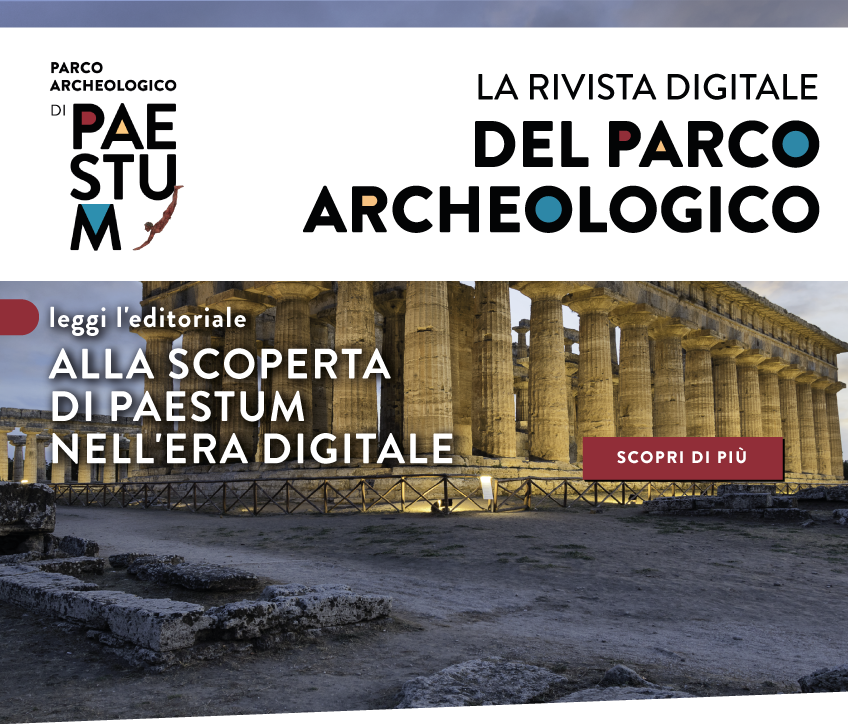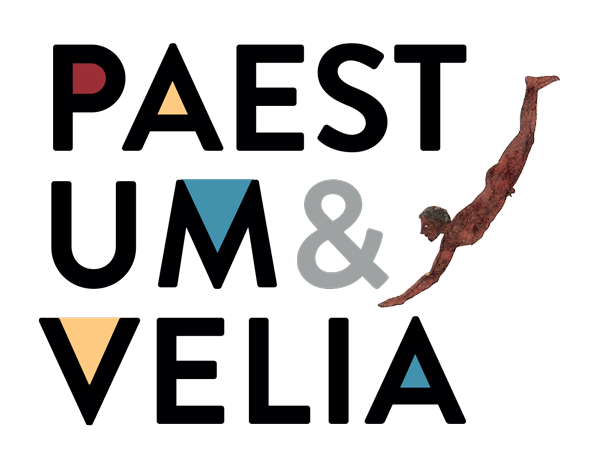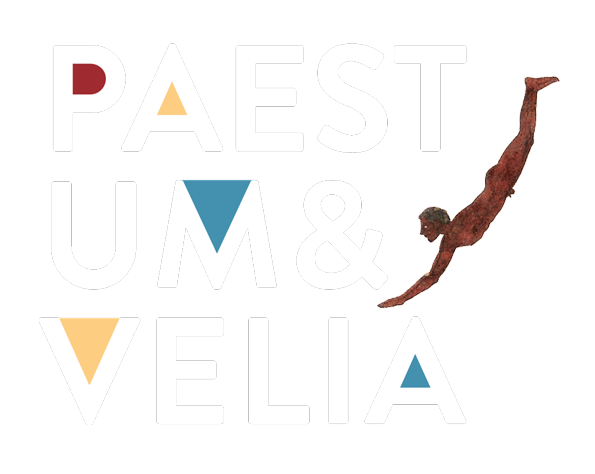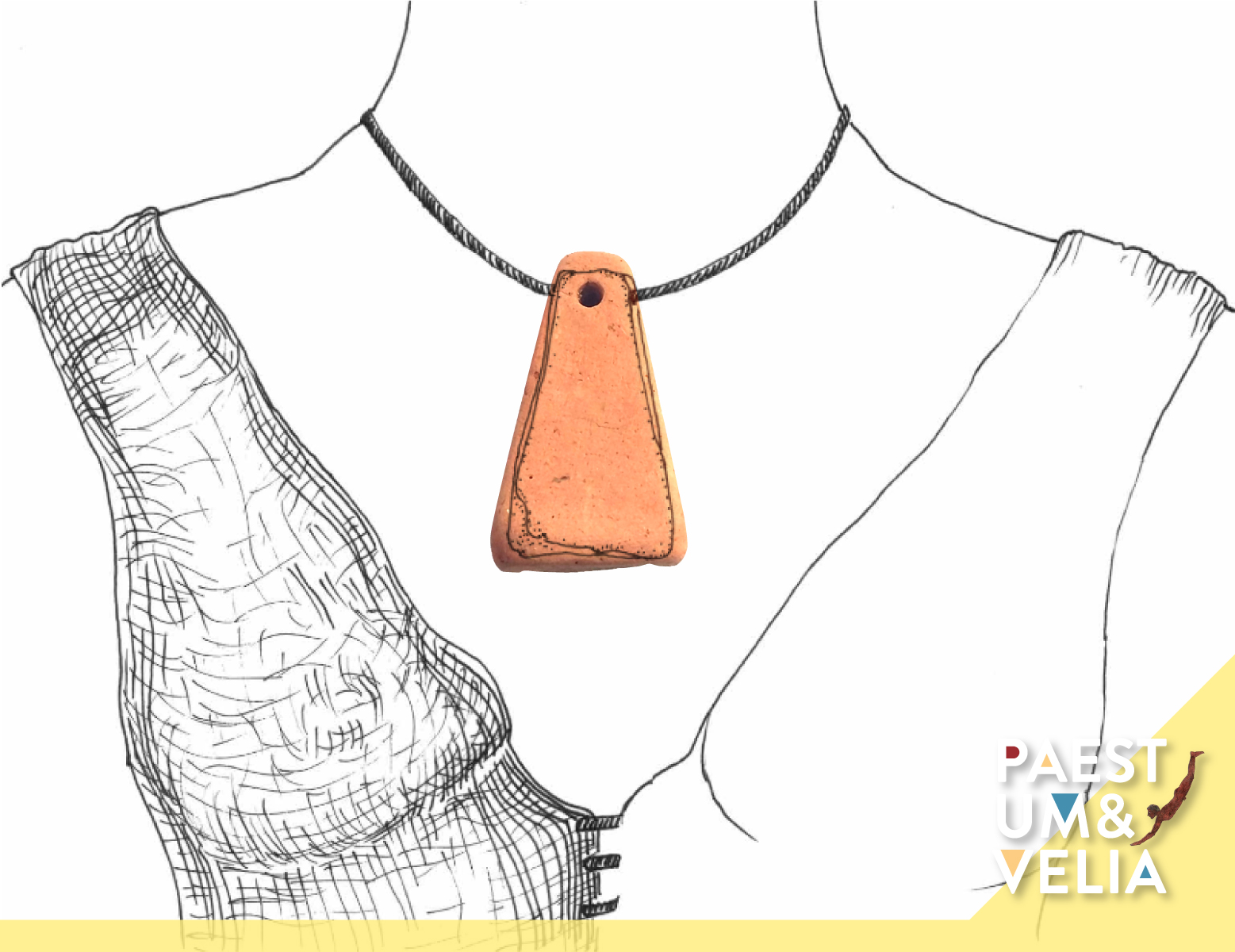

ear Readers,
We will discuss here some of the things we (still) don’t know about Paestum but which we would like to find out. Although Paestum is generally considered the best-known city in Magna Graecia, the site still poses many conundrums for archaeologists, architects and historians. The column explores some of the issues surrounding the site.
This month’s column is written by the archaeologist Concetta Masseria.
Scent of a woman
“You see, I loved her. It was love at first sight, at last sight, at even and ever sight.”
(Vladimir Nabokov, Lolita, 336)
A display case in the Museum of Paestum contains a vase of great importance due to its shape, function, provenance and, in particular, the image painted on its surface.


This seems to be the ideal occasion to tell our readers about the story of the vase, the message it conveys and the meanings that lie behind the outward appearance. The lekythos, a vessel designed to contain scented oil, is a red-figure vase with a background painted in a lustrous black gloss. It was found many years ago by Pellegrino C. Sestieri in the area known as the Southern Sanctuary. The sacred area houses two of the largest temples in Greek Poseidonia, the Heraion (the large temple attributed to the goddess Hera) and the Temple of Apollo (better known as the “Temple of Neptune” according to a well-entrenched tradition that is hard to break away from even though the evidence shows that it is more logical to attribute it to Apollo). However, there are also several smaller sacred buildings of a simpler architectural type which lack a peristais (the colonnade surrounding the cella). The sacred place also includes a building which has been identified as the Asklepieion, a temple dedicated to the cult of Asclepius, the god of medicine and son of Apollo.
This sacred area also features other structures linked to religious events, such as altars – crucial elements for the celebration of rituals – and several smaller ones containing the votive offerings of the faithful. These “chests” – locally known as “loculi” (niches) – are quadrangular and are built with slabs of local stone assembled to form containers of objects offered as ex-votos, veritable thesauroi (treasuries).
This lekythos almost certainly comes from “loculo IV situated to the north-west of the so-called Temple of Neptune” (to judge from the note written by hand at the time of the discovery and which was later found together with the vase in the storerooms of the museum). As will be seen, the indications of the provenance are of immense importance for our understanding of the role played by the object at the time of its deposition as a devotional offering.
The image painted on the surface shows a group of five characters – two men, two women and a figure of the young Eros with his wings outstretched – who move in the figurative space according to a system of exchanged glances that shows the simultaneity of the actions and the sharing of reciprocal behaviour. The details of each figure allow an unambiguous interpretation about the meaning of the implied gestures.
Let’s have a closer look: the focus of the story lies at the centre of the image and involves the two female figures and the figure of Eros, while the two male figures situated on the edges of the figurative field on the two opposing extremities of the scene mark its beginning and end. The two women have different roles: the first, elegantly dressed in a long chiton, is seated, probably on a rock, and reaches out so that she drops grains of incense from her right hand into the small dish of a thymiaterion (incense burner) by her feet, while she holds a small box, probably a container of incense, in her left hand. The other woman wears a himation wrapped around her hips while the upper part of her body is completely naked; she is captured in the moment when, urged on by Eros with outstretched wings, she begins to climb a ladder, holding in her right hand the upper part of a broken amphora upturned and used as a container of kepos (a small garden of ephemeral plants destined to die after a short time) which she will place on the roof. The two young people on the sides of the figurative image do not appear to be playing a precise role except for being spectators – they are portrayed naked, one seated and the other standing, both with just their heads and the gazes directed towards the centre of the scene but with their bodies turned away from it. In this context, the significant detail is provided by the ladder, seemingly propped up against a wall – in reality, it is the wall of the vase that provides the support – and the true barycentre around which the figurative account unfolds.
The presence of this element provides unequivocal proof that it is a sort of “photograph” which immortalises one of the culminating moments of the celebration of the Adonia, a festival held in honour of Adonis, the beautiful son of Myrrha (the cursed Cypriot princess) and the fruit of forbidden love.
The protagonist of the scene is the goddess Aphrodite, the irresistible goddess of beauty, seduction and love. The goddess was the architect of the life of the young man – the original cause of his fatal conception – and subsequently of every aspect of his destiny until his death – and even of his annual resurrection.
It is a love story that stems from, and feeds on, the words of the myth, a complex yet realistic story due to the tangible effects of the rituals that emphasise its forms and aspects and which were celebrated throughout the Greek world until the Christian era.
Aphrodite and the eternally youthful Adonis are indissolubly linked by the passion felt by the goddess which is manifested in an extremely human way through the gestures and deeds of a woman who is deeply in love, her gaze fixed on her young lover and her heart pounding.
This complex, tragic story is evoked by the ritual of the festival which was celebrated once a year with the active participation of women from all social backgrounds. Adonis dies and is brought back to life according to firmly established rules and by the cruel twist of fate that not even a goddess can do anything to change. A hunting trip was to prove fatal. The naivety and imprudent behaviour of the young man leads him to pay the ultimate price of losing his life and his tragic destiny unfolds. Love and death represent Fate in all its inexorable cruelty. The heartbreak of the goddess, her impotence, the grief caused by the ineluctability of the consequences of the tragic event, are told in the moving words of the poet Ovid (Metamorphoses, X, 717-739): “…Venus had not yet reached Cyprus; she heard, far off, the dying boy – his moans. She turned around her white swans and rode back. When, from the heights, she saw him lifeless there, a bleeding corpse, she leapt down to the ground. And she rent her clothes, tore her hair, and – much unlike a goddess – beat her hands against her breast. She challenged fate: ‘But destiny does not rule all. Adonis, your memory will live eternally: each year they will repeat this final scene – your day of death, my day of grief, will be enacted in a feast that bears your name. ‘I shall transform your blood into a flower. (…)’ That said, she sprinkled scented nectar on his blood, which then fermented (…) One hour had yet to pass when, from that gore a blood-red flower sprang, the very colour of pomegranates when that fruit is ripe and hides sweet seeds beneath its pliant rind. And yet Adonis’ blossoms have brief life: his flower is light and delicate; it clings too loosely to the stem and thus is called Anemone – ‘born of the wind’ – because winds shake its fragile petals, and they fall.” Fragile and delicate like life itself, the anemone entrusts its blood-red petals and its very existence to a puff of wind. The tears of the goddess marked the start of the ritual of memory, the nocturnal festival with the laments of the girls, the ephemeral gardens placed on the roof, the inebriating scent of the burnt incense, and so Adonis dies in the arms of his divine lover.
This is the scene depicted on the lekythos, a still of the rituals being performed: the seated woman dressed as a divine bride who scatters grains of incense, the girl who climbs the ladder to arrange the kepos on the roof and Eros who moves delicately, with outstretched wings, to give sense and meaning to the ceremony. Eros and Thanatos, love and death indissolubly linked to the goddess of charis, the loving seduction evoked sculpturally by the form of the vase, a lekythos, a container of scented oil, made, and certainly donated as a love offering, in a period of time ranging from the final years of the fifth century BC to the first few years of the following century. Scent and seduction – perfume is a means of attraction, the vehicle of romantic passion, and Aphrodite is undoubtedly the recipient of this precious gift preserved in “loculo IV” and later, after an almost infinite amount of time, brought back to life and “restored” to us all as a message of love and also as an instrument of knowledge of the past which belongs to us all. For this reason, the festival that celebrates the tragic love story, through a hybrid tale of myth and ritual, finds in the large southern sacred area of Poseidonia its own special place. Through the memory of the annual reiteration of the ceremony, with its theatrical aspects, the fragility of the anemones, the perfume of incense and myrrh, the echo of the funerary chants, the memory of the girls’ tears and the grief-struck barren gardens placed on the roof, we can also take part in hope, which becomes certainty, of the “return” ensured by the strength of love. Eros even manages to defeat Thanatos. “Destruction or Love”, as the Spanish poet Vicente Aleixandre would eloquently put it many centuries later.






